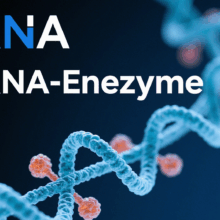
Mechanisms of Synthetic mRNA in Delivering Genetic Information for Protein Synthesis
Synthetic mRNA (Synth mRNA) is an artificially designed RNA molecule produced via in vitro transcription (IVT). It mimics natural mRNA’s biological properties to efficiently and precisely carry genetic instructions for protein synthesis. This process involves genetic encoding, stable delivery, and translational regulation, analyzed below across molecular mechanisms, structural optimizations, and real-world applications.
I. Genetic Encoding: From Sequence Design to Functional Template
1. Precise Sequence Transcription
Synth mRNA encodes genetic information from target protein genes. Computer-aided design (CAD) and deep learning algorithms (e.g., SpliceBERT) optimize:
- Codon Optimization: Adjust codon usage frequency to match the host cell’s tRNA pool, enhancing translation efficiency (e.g., replacing rare codons with high-frequency synonyms).
- Secondary Structure Stability: Predict and refine mRNA structures (e.g., hairpins, stem-loops) to minimize ribosome stalling and prolong translation.
- Open Reading Frame (ORF) Design: Ensure ORFs lack premature stop codons and include Kozak sequences (e.g., CCACCAUGG) for ribosome recognition.
2. In Vitro Transcription (IVT) Technology
- Template Preparation: Linearized plasmid DNA or PCR products serve as templates for T7 RNA polymerase-driven transcription, yielding high-purity mRNA.
- Co-Transcriptional Modifications: CleanCap technology adds 5’ cap structures (e.g., Cap 1) during IVT, while polyadenylation (Poly-A tail) enhances mRNA stability and translational activity.
II. Delivery and Stability: Protecting Synthetic mRNA
1. Advanced Delivery Systems
- Lipid Nanoparticles (LNPs):
- Microfluidic encapsulation (>95% efficiency) protects mRNA from nucleases. Cationic lipids (e.g., CL-301) promote cell membrane fusion and endosomal escape.
- Targeted Delivery: CSPC Pharmaceutical Group’s CNS-targeted LNPs enhance brain delivery efficiency by 5x.
2. Stability Enhancements
- Nucleotide Substitution: N1-methylpseudouridine (m1Ψ) replaces uridine to reduce immunogenicity (avoiding TLR7/8 detection) and extend mRNA half-life from 4 hours to 72 hours.
- Lyophilization: CureVac’s RNActive platform enables mRNA vaccine storage at 2–8°C for 24 months, bypassing cold-chain requirements.
III. Translation Mechanisms: From mRNA to Functional Protein
1. Initiation
- 5’ Cap Recognition: The 5’ cap (e.g., m7GpppN) binds eukaryotic initiation factor 4E (eIF4E), recruiting ribosomal subunits to the mRNA start site.
- IRES Elements: Internal ribosome entry site (IRES) sequences enable cap-independent translation in specific viral vector systems.
2. Elongation and Termination
- Codon-Anticodon Pairing: tRNA anticodons complement mRNA codons to deliver amino acids (e.g., AUG codon recruits methionine-bearing tRNA).
- Polysome Activity: Multiple ribosomes simultaneously translate a single mRNA, boosting protein yield.
3. Quality Control
- Error Correction: Ribosomal EF-Tu GTPase activity ensures aminoacyl-tRNA matching, maintaining an error rate below 10⁻⁴.
- Nonsense-Mediated Decay (NMD): UPF protein complexes degrade mRNAs with premature stop codons, ensuring only full-length proteins are synthesized.
IV. Applications: Technical Advantages of Synthetic mRNA
1. Rapid Vaccine Development
- COVID-19 Vaccines: Moderna’s mRNA-1273 progressed from design to clinical production in 63 days using modular platforms (e.g., spike protein sequence swaps).
- Multivalent Vaccines: Modular assembly of antigens (e.g., influenza + COVID-19) shortens development timelines by 60% compared to traditional vaccines.
2. Personalized Medicine
- Neoantigen Vaccines: BioNTech’s FixVac platform generates personalized mRNA vaccines in 4 weeks, targeting 20+ tumor antigens via biopsy sequencing.
- Gene Editing: Co-delivery of CRISPR-Cas9 mRNA and sgRNA skips mutated exons in Duchenne muscular dystrophy, restoring 40% dystrophin function.
3. Industrial Manufacturing
- Continuous Production: Moderna’s integrated system compresses production timelines from 60 to 18 days via plasmid amplification, IVT, purification, and fill-finish.
- AI-Driven Quality Control: Process Analytical Technology (PAT) monitors mRNA integrity and LNP size in real time, reducing batch variability to ±3%.
V. Challenges and Future Directions
1. Dynamic Control
- Optogenetic Switches: Light-sensitive RNA elements enable spatiotemporal control of protein expression.
- Self-Amplifying RNA (saRNA): Alphavirus replicase genes extend expression to 28 days per dose, reducing dosage requirements by 90%.
2. Interdisciplinary Integration
- AI-Lab Systems: Recursion’s BioMIA integrates AlphaFold-predicted protein structures with mRNA stability models for automated sequence design.
- Synthetic Biology Circuits: Logic-gated mRNA systems enable conditional protein expression in disease microenvironments.
Conclusion
Synthetic mRNA revolutionizes biomedicine through codon optimization, targeted delivery systems, and translational regulation. By shifting from trial-and-error R&D to computationally driven design, it unlocks rapid responses in vaccines, cancer therapy, and gene editing. With AI and synthetic biology convergence, Synth mRNA promises to pioneer on-demand, dynamic therapeutics in precision medicine.
Data sourced from public references. Contact: chuanchuan810@gmail.com.






